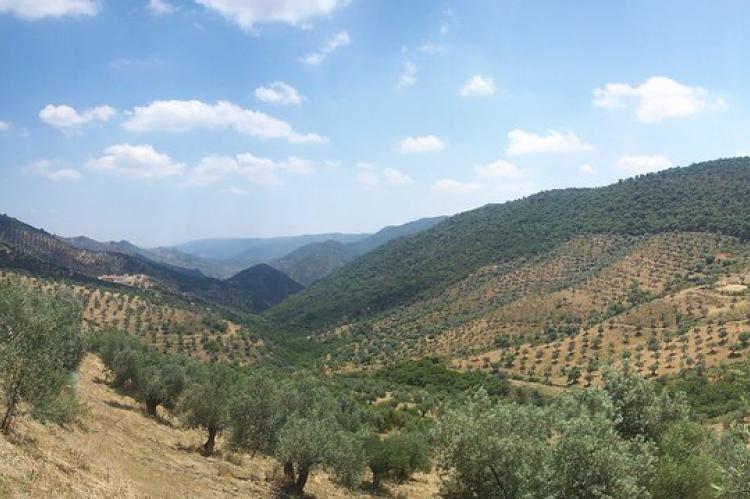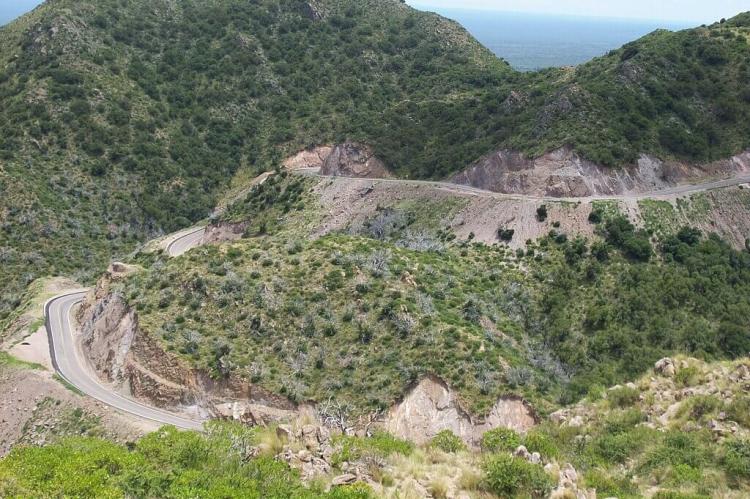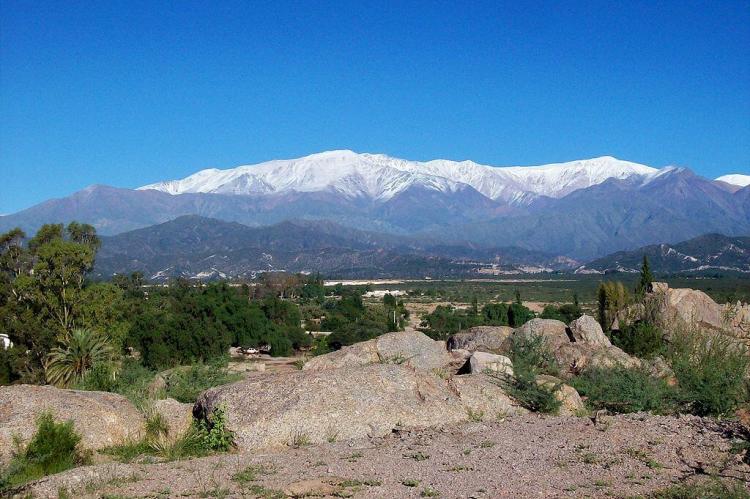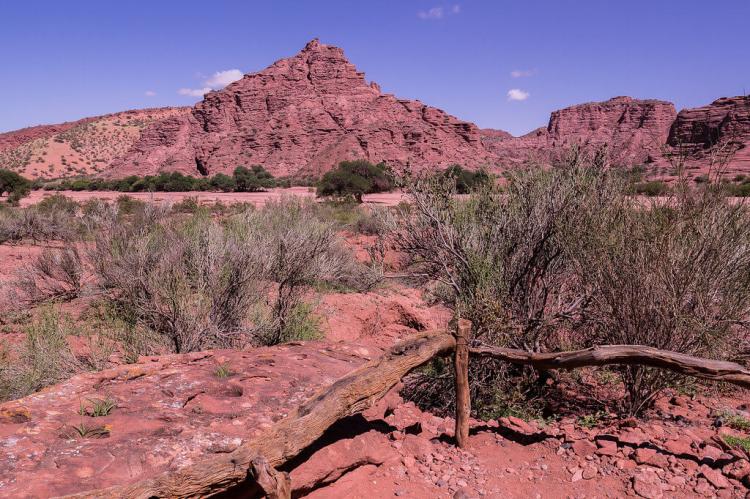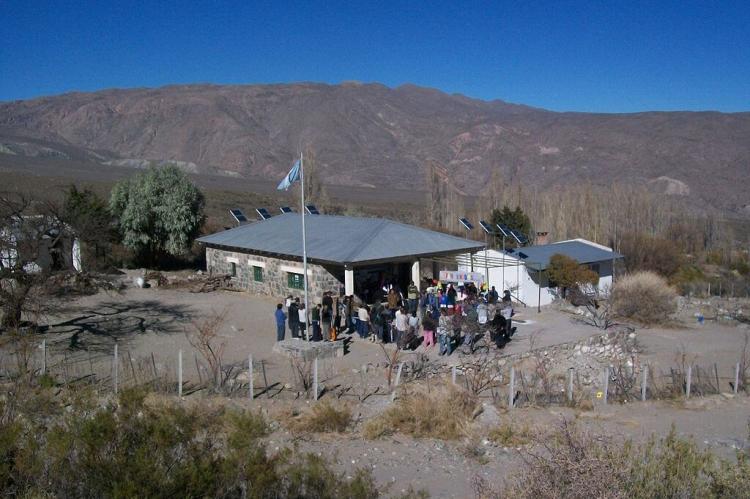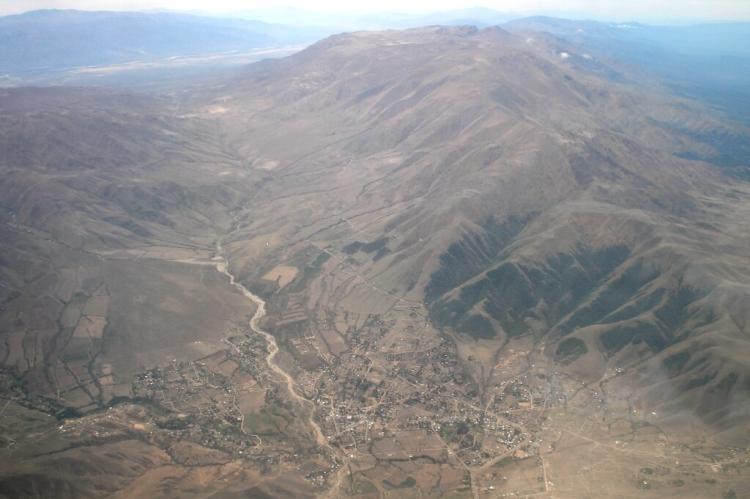The Sierras Pampeanas: Unveiling Argentina's Diverse Landscape and Heritage
Stretching across northwestern Argentina, the Sierras Pampeanas, or Central Sierras, rise sharply from the surrounding Pampas region parallel to the Andes. Encompassing seven Argentine provinces, the area is characterized by its rugged terrain, diverse ecosystems, and rich biodiversity.
The Sierras Pampeanas: Unveiling Argentina's Diverse Landscape and Heritage
Stretching across northwestern Argentina, the Sierras Pampeanas, also known as the Central Sierras, present a mesmerizing tapestry of geographical features, flora, and fauna. This expansive mountain range rises abruptly from the surrounding Pampas region, extending parallel to the towering Andes Mountains. Encompassing seven Argentine provinces—San Luis, San Juan, Córdoba, La Rioja, Catamarca, Santiago del Estero, and Tucumán—the Sierras Pampeanas region is characterized by its rugged terrain, diverse ecosystems, and rich biodiversity.
Subregions and Geological Diversity
The Sierras Pampeanas region encompasses several distinct subregions, each with unique geological formations and ecological characteristics. From the Cumbres Calchaquíes in Tucumán and Catamarca to the Sierra de Cordoba in Córdoba, these subregions showcase the remarkable diversity of landscapes within the Central Sierras.
Cumbres Calchaquíes (Tucumán and Catamarca): Nestled in the provinces of Tucumán and Catamarca, the Cumbres Calchaquíes are renowned for their rugged beauty and dramatic landscapes. Towering peaks, deep valleys, and winding rivers define this subregion, offering breathtaking vistas and unparalleled opportunities for exploration.
Sierra de Córdoba (Córdoba): The Sierra de Córdoba, located in the province of Córdoba, is characterized by its rolling hills, lush forests, and cascading waterfalls. This subregion is a haven for outdoor enthusiasts, with abundant hiking trails, rock climbing routes, and scenic viewpoints.
Sierra de Famatina (La Rioja): In the province of La Rioja, the Sierra de Famatina is home to Cerro General Belgrano, towering at an impressive 6,250 meters (20,500 feet) above sea level, the highest point in the Sierras Pampeanas. This subregion is renowned for its rugged terrain, deep gorges, and ancient rock formations, offering a glimpse into its geological history.
Sierra de los Llanos (La Rioja): The Sierra de los Llanos is characterized by its expansive plains, rolling hills, and winding rivers. This subregion is a haven for wildlife, with diverse ecosystems supporting a wide variety of plant and animal species.
Sierra de los Colorados (La Rioja): Named for its vibrant red rock formations, the Sierra de los Colorados is a geological marvel. Its towering cliffs, deep canyons, and hidden caves await exploration. This subregion is a paradise for geologists and adventurers alike.
Sierras de San Luis (San Luis): Located in the province of San Luis, the Sierras de San Luis are known for their rugged beauty and pristine wilderness. This subregion offers a wealth of outdoor recreational opportunities, including hiking, mountain biking, and horseback riding.
Sierra del Aconquija (Tucumán): Rising along the border of Tucumán and Catamarca, the Sierra del Aconquija is characterized by its snow-capped peaks, alpine meadows, and crystal-clear streams. This subregion is a popular destination for mountaineers and nature lovers seeking solitude and serenity amidst the mountains.
Climate and Vegetation
The climatic diversity of the Sierras Pampeanas region reflects its varied topography and geographical features, resulting in a mosaic of ecosystems that support a wide array of plant life.
At lower elevations and on the northern east slopes, where the influence of the Atlantic Ocean is felt, a subtropical climate prevails. Here, abundant rainfall and high humidity foster the growth of dense rainforests characterized by towering trees, lush undergrowth, and a profusion of epiphytes. Species such as algarrobo blanco, algarrobo negro, and chañar thrive in these humid environments alongside ferns, bromeliads, and orchids that adorn the forest canopy.
In contrast, the western regions of the Sierras Pampeanas experience a more arid climate, with sparse precipitation and higher temperatures. Xeric shrubs and succulents adapted to these harsh conditions dominate the landscape, including various cacti, chilca, and tola species. Giant cacti stand sentinel amidst rocky outcrops, while hardy shrubs such as mistol, piquillin, and tala survive in the arid soils.
Moving toward the central and eastern slopes of the mountains, the climate transitions to a Mediterranean-type regime characterized by distinct wet and dry seasons. Summers bring intense thunderstorms, which nourish the fertile soils and support a diverse array of vegetation. Conifers like pine and fir dot the landscape, interspersed with alder, walnut, and jacaranda trees. Deciduous species like oak, willow, and poplar add to the verdant tapestry, turning vibrant hues in the autumn months.
Natural forests thrive in the valleys and plains of Córdoba and San Luis, where water is more abundant; natural forests thrive, providing habitat for many plant species. Olive groves, fruit orchards, and vineyards blanket the hillsides, reflecting the region's rich agricultural heritage and contributing to its scenic beauty.
Fauna and Conservation Efforts
The Sierras Pampeanas region harbors a rich tapestry of wildlife, ranging from iconic predators like pumas and wildcats to lesser-known species such as the brocket deer and viscacha. These animals have adapted to thrive in the diverse habitats of the Central Sierras, from rugged mountain slopes to lush forests and expansive grasslands.
Despite their resilience, many of these species face threats from human activities, including habitat loss, fragmentation, and poaching. The expansion of agriculture, urbanization, and infrastructure development has encroached upon natural habitats, disrupting ecological balance and threatening the survival of vulnerable wildlife populations.
In response to these challenges, conservation efforts are underway to protect the region's biodiversity and ensure the long-term viability of its ecosystems. Conservation organizations, government agencies, and local communities collaborate to establish protected areas, wildlife corridors, and conservation easements to safeguard crucial habitats and mitigate human-wildlife conflicts.
One such initiative is the creation of wildlife reserves and national parks, which provide sanctuary for endangered species and serve as important hubs for scientific research and ecotourism. These protected areas, including Talampaya National Park and Ischigualasto Provincial Park, play a vital role in preserving the unique flora and fauna of the Central Sierras while offering visitors the opportunity to experience the region's natural wonders firsthand.
Additionally, community-based conservation projects engage residents in conservation efforts, empowering them to become stewards of their natural heritage. Through education, outreach, and sustainable livelihood programs, these initiatives foster a sense of ownership and pride in protecting the environment and promote coexistence between humans and wildlife.
Cultural and Ecotourism
The cultural richness of the Sierras Pampeanas region is as diverse as its natural landscapes, offering visitors a fascinating journey through time and tradition.
Indigenous Communities: Throughout the Central Sierras, indigenous communities have inhabited these lands for centuries, leaving a legacy of art, folklore, and spiritual practices. Today, travelers can engage with these vibrant cultures, learning about ancient traditions, artisan crafts, and traditional music and dance. Visiting indigenous communities provides a unique insight into their way of life and a deep connection to the land.
Historical Sites: The Sierras Pampeanas region is dotted with archaeological sites and historical landmarks, bearing witness to the area's rich history. From ancient petroglyphs etched into rocky outcrops to colonial-era haciendas and Jesuit missions, each site tells a story of human settlement and cultural exchange. Exploring these historical treasures offers visitors a glimpse into Argentina's past and the diverse peoples who have shaped its identity.
Local Traditions: Travelers can immerse themselves in the vibrant traditions of the region by participating in local festivals, markets, and culinary experiences. Whether sampling traditional dishes made from locally sourced ingredients or witnessing colorful celebrations honoring indigenous customs, visitors are invited to celebrate the cultural heritage of the Central Sierras alongside the communities who call it home.
Ecotourism Initiatives: Ecotourism has emerged as a sustainable way to experience the natural beauty of the Sierras Pampeanas while supporting conservation efforts and local communities. Guided hiking tours lead visitors through pristine wilderness areas, providing opportunities to observe native wildlife and learn about local flora and fauna. Wildlife-watching excursions offer the chance to spot elusive species such as pumas, condors, and guanacos in their natural habitats. At the same time, birdwatching enthusiasts can marvel at the region's diverse avian species.
Sustainable Travel Experiences: Eco-friendly accommodations, organic farms, and community-based tourism initiatives are increasingly popular for travelers seeking responsible and authentic experiences in the Central Sierras. Visitors can stay in eco-lodges nestled within nature reserves, dine on locally sourced cuisine, and participate in conservation projects to preserve the region's biodiversity. By choosing sustainable travel options, visitors can minimize their environmental impact and contribute to protecting the Sierras Pampeanas' cultural and ecological heritage.
Conclusion
In conclusion, the Sierras Pampeanas region is a testament to the remarkable diversity of landscapes, wildlife, and cultures in northwestern Argentina. From its rugged mountain ranges and lush rainforests to its ancient petroglyphs and vibrant indigenous communities, the Central Sierras offer visitors many experiences to explore and appreciate. Conservation efforts are vital to safeguarding this unique ecosystem and preserving its rich cultural heritage for future generations to enjoy and cherish.
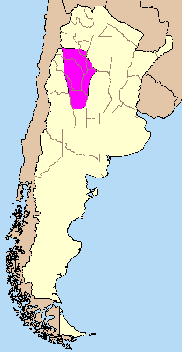
Map depicting the location of the Sierras Pampeanas region.
